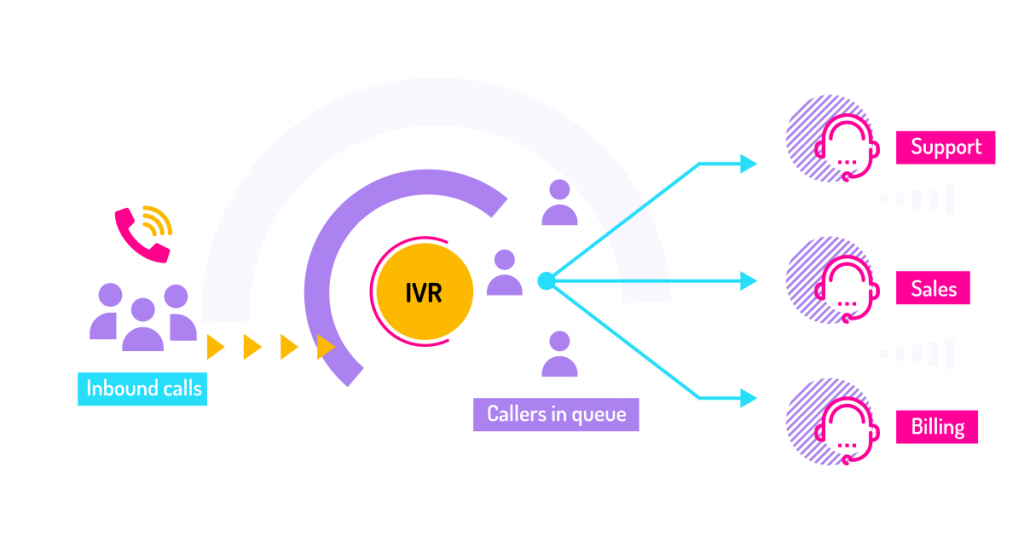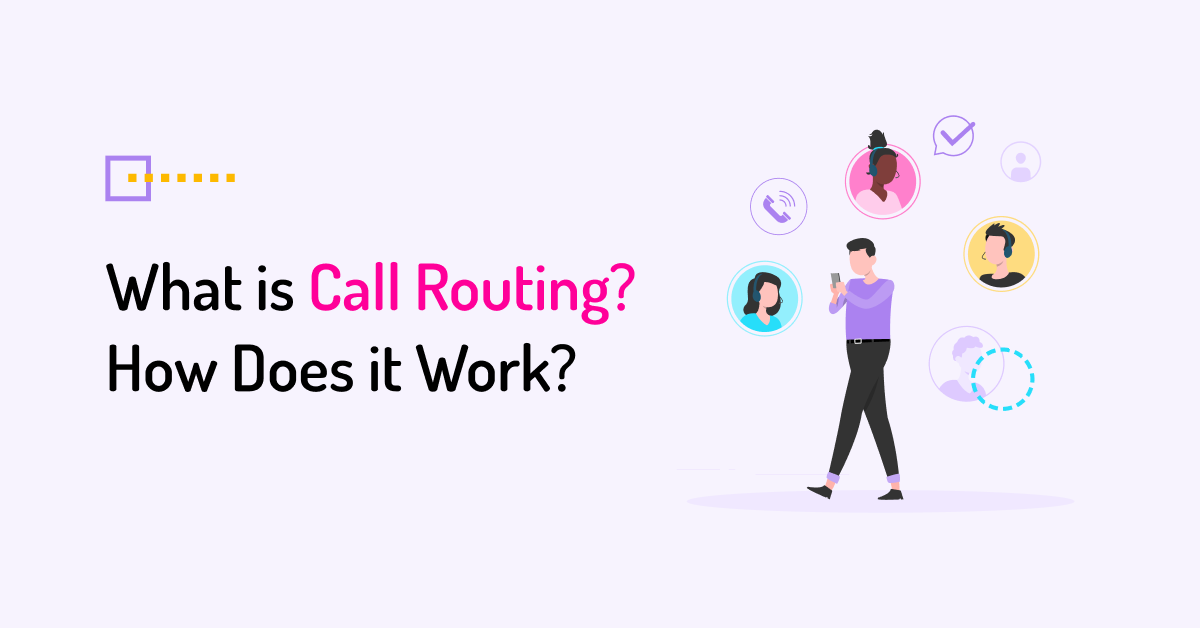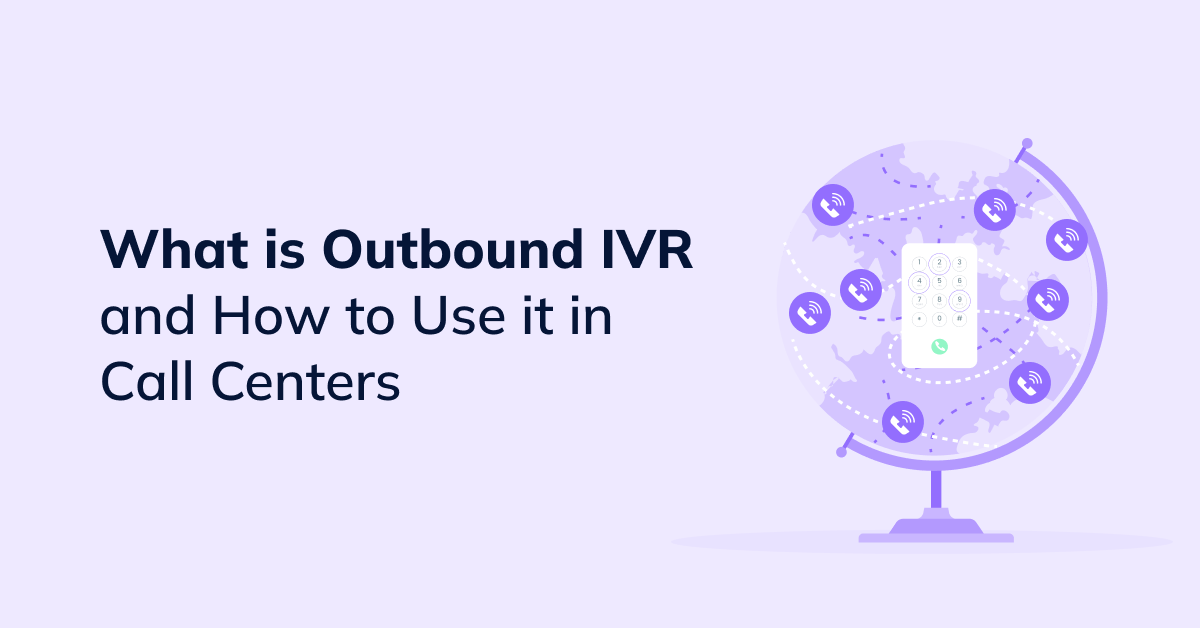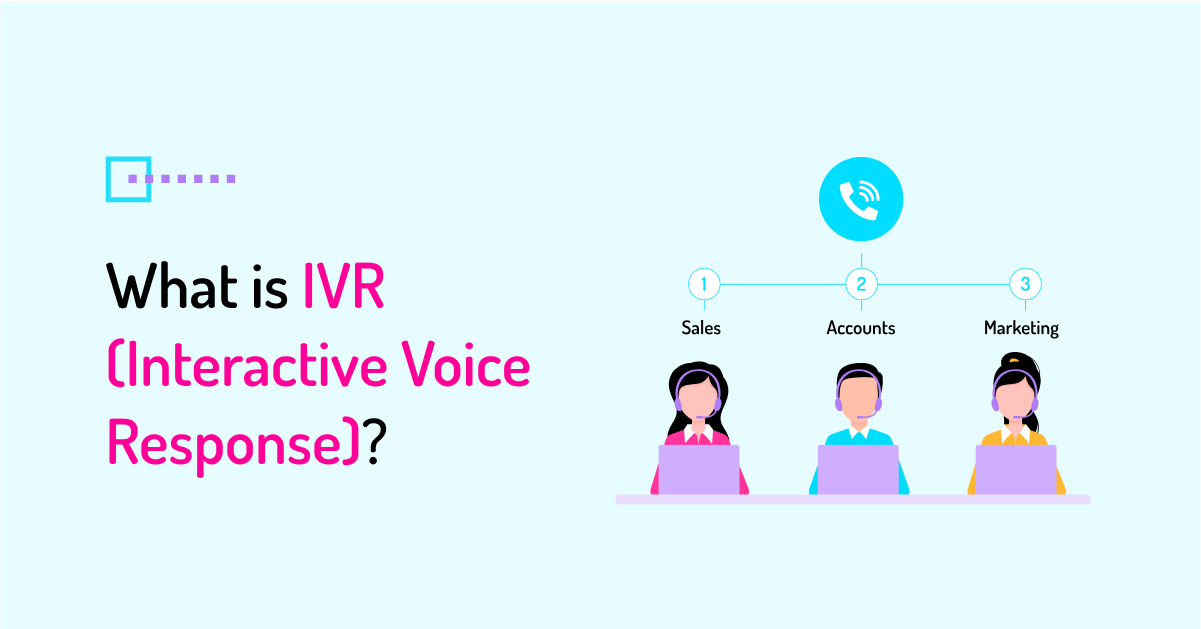Call routing is the foundation of providing an excellent customer service experience and maintaining high customer satisfaction levels in call centers. Despite the recent rise of self-service and AI-powered chatbots, voice support remains a preferred choice for a significant number of today’s consumers. An effective call routing strategy ensures incoming calls are handled quickly and efficiently, and customers are always connected to the most appropriate agents.
What is Call Routing?
Also known as Automatic Call Distribution (ACD), call routing is a call management feature of call center software systems. It places each incoming call in a queue and routes it to a specific agent or department based on certain predetermined criteria, such as language, skill set, agent availability, etc. The goal is to connect the caller to an agent, best qualified to handle their inquiry. Call routing is the fundamental functionality of inbound call center solutions.
How does Call Routing System Work?
Call routing software works by using predefined rules to distribute inbound calls among agents in the most optimal way. Call centers may be using different call routing methods. In general, the call routing process breaks down into three phases:

1. Call Qualifying
Call routing may occur automatically without callers being aware of it. But in most call centers, whenever a customer or a prospect initiates a call, they are first connected to the Interactive Voice Response (IVR) system. The caller is asked to use their dial pad or voice to select call menu options or respond to pre-recorded questions (e.g., ‘Press 3 for billing issues’). This way, the IVR system can process their responses and determine the caller’s purpose and the type of support they are seeking.
2. Call Queueing
The IVR system then forwards the caller input to the ACD, which places the call in the corresponding call queue based on the query type, skills, waiting time, or priority. While in a queue, the caller would often hear a message indicating their number on the queue and an estimated wait time until an agent becomes available to pick up the call. The caller can choose to stay on hold and wait for a live agent to answer, hang up and call later, or request a callback.
3. Call Distribution
The final stage of the process is to route calls in a queue to an appropriate agent, who is best suited to handle the caller’s inquiry. Once an agent becomes available to pick up the next call, the first call in the queue is connected. Call distribution is also determined by the routing rules and priorities established in a call center. For example, to minimize agent idle times and ensure the optimal agent workload, calls may be routed to the agent who has been least busy throughout the day (has the least talk time).
Types of Inbound Calls Routing
There are multiple call routing system types used in call centers. Full-featured modern contact center solutions typically allow selecting from various types of call routing options to ensure call centers can leverage different call routing strategies according to their requirements. The most common call routing approaches are:
Time-based routing
Time-based routing directs customer calls based on the agent’s time zone or business hours. It’s widely used in global and geographically distributed call centers and often combined with other types of call routing (like geographical and skill-based routing) to ensure a more efficient call routing strategy.
Geographical routing
Geographical routing directs inbound calls to agents based on the caller’s geographical location (e.g., the caller’s area code, city, and GPS location). This type of call routing is usually also combined with other types of routing methods.
Fixed order routing
With fixed order routing, also known as sequential routing, calls are directed to a group of agents in a fixed order, keeping a specific agent at the top of the line to pick up the calls during a certain period. Only if that agent is unavailable, the call will be routed to the next agent on the list.
Round-robin routing
Round-robin routing, also known as rotary routing, distributes incoming calls evenly among the specific group of agents rather than routing calls to the next available agent. This type of call routing ensures each agent gets a fair share of calls, though it may also lead to longer wait times for callers.
Skill-based routing
Skills-based routing directs callers to an agent who is best qualified to handle their query based on agent’s skill set, expertise, or product knowledge, with the caller’s information taken from IVR responses. E.g., tech support requests will be routed to technical support agents, while billing inquiries will be routed to the agents from the billing department.
Percentage-based routing
Percentage-based routing is a call routing method for routing incoming calls across teams based on their size. This type of routing is mostly used by businesses with multiple call centers. It helps to prevent call centers from being overwhelmed by ensuring smaller ones do not get the same volume of calls as the larger ones.
Least occupied routing
Least occupied routing directs the calls to the agent who has taken the least number of calls or has spent the least time talking to customers. With this type of phone call routing, call centers can balance agent workloads while minimizing agent burnout. However, it should be combined with other call routing strategies for better efficiency.
Priority routing
Priority routing, also referred to as VIP routing, is a type of call routing that directs inbound calls based on the priority level of the issue or the caller using caller ID. It can be used to ensure a business’s VIP or high-value clients are placed at the front of the call queue and always get priority support.
Intelligent routing
Also known as predictive behavioral routing, this type of routing uses intelligent call routing logic, real-time and historical data, and machine-learning algorithms to predict the most appropriate agent to handle the call. It can even route the call to the agent who has previously interacted with the customer and knows their account history.
Benefits of Call Routing
Call routing systems allow businesses to manage high inbound call volumes more efficiently which is helpful to both customers and call center agents. They make the call-handling process easier for call centers by ensuring callers are always connected to the most suitable agents while agents can handle issues faster and more efficiently. Some of the specific benefits include:
- Reduced wait times for callers
- Fewer missed calls and voicemails
- Lower call abandonment rates
- Faster issue resolution
- Improved first call resolution
- Enhanced customer satisfaction
- Improved customer experience
- Increased agent performance
- Boosted agent productivity
- Improved agent workflow
- More balanced agent workload
- Optimized workforce management
- Reduced operational costs
Why is Call Routing Essential?
Call routing is an essential aspect of inbound call center operations. With a call routing system, call centers can immediately increase customer satisfaction by ensuring inbound customer calls are answered by the right people at the right time. That plays a crucial role in a business’s ability to deliver a positive customer service experience, meet customers’ expectations, and remain competitive.
Call Routing FAQs
How are incoming calls routed in a call center?
Inbound calls are routed through call routing software which is typically part of call center software solutions. The system distributes calls to the most suited call center agents or departments depending on predefined rules and criteria. These can include caller ID, agent availability, agent skill set and qualifications, type of inquiry, customer demographics, language preferences, etc.
What is the difference between call forwarding and call routing?
Call routing ensures an incoming call is routed to a relevant call center rep based on pre-configured rules and the IVR inputs. Call forwarding automatically redirects incoming phone calls to an alternative phone number or a voicemail based on predefined conditions. E.g., a call may be forwarded if it comes outside of the call center’s business hours, if the line is busy or unavailable, or if the call isn’t picked up within the specified time.
What is call routing in iPhone?
Call routing is a critical feature of call center software systems. On iPhones, call routing may refer to the process of directing (forwarding) inbound calls to a user’s different number (can be enabled in the ‘Settings’ > ‘Phone’ > ‘Call Forwarding’) or voicemail based on the user’s preferences.





 +18889082995
+18889082995
 +442036084160
+442036084160
 +97237237006
+97237237006